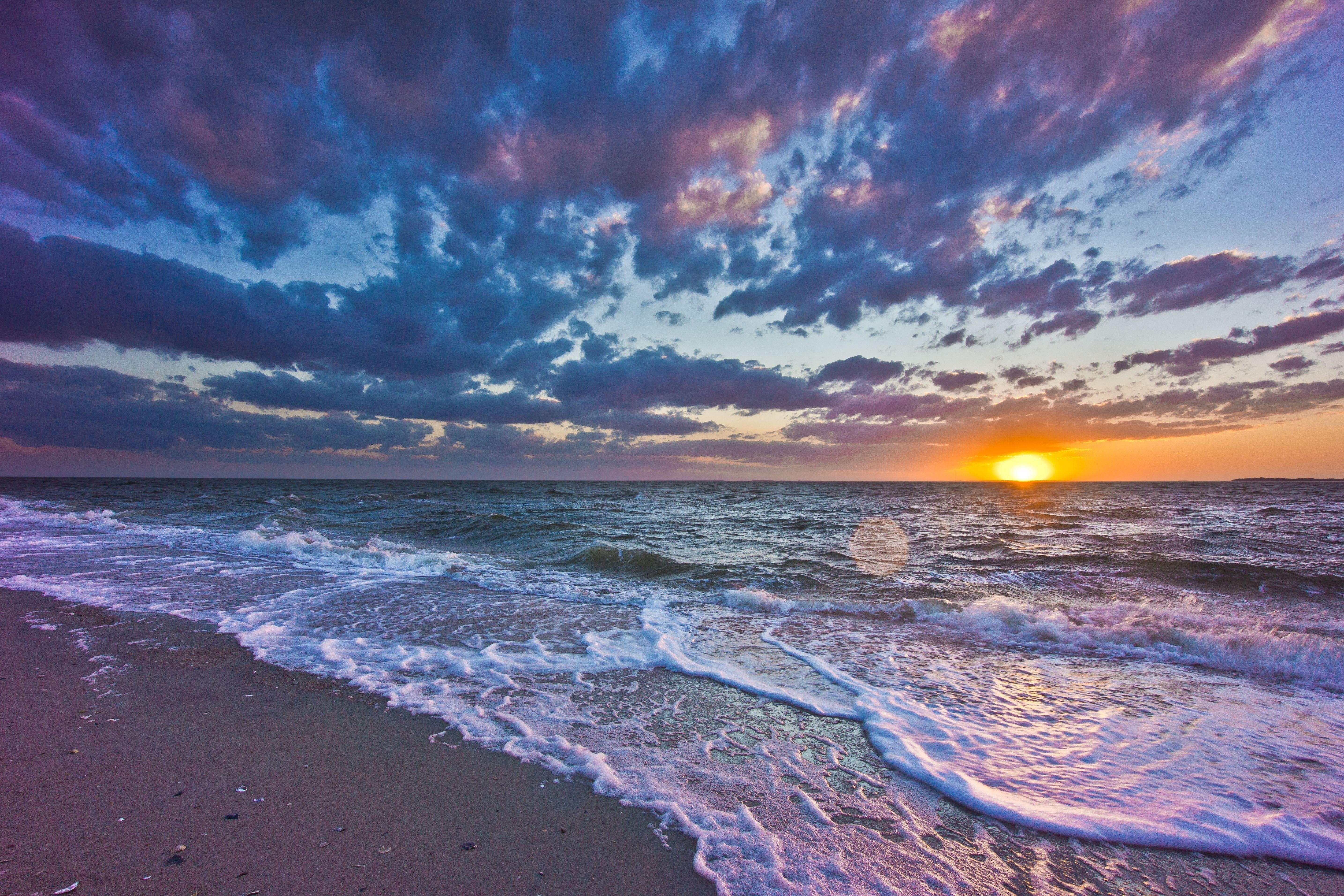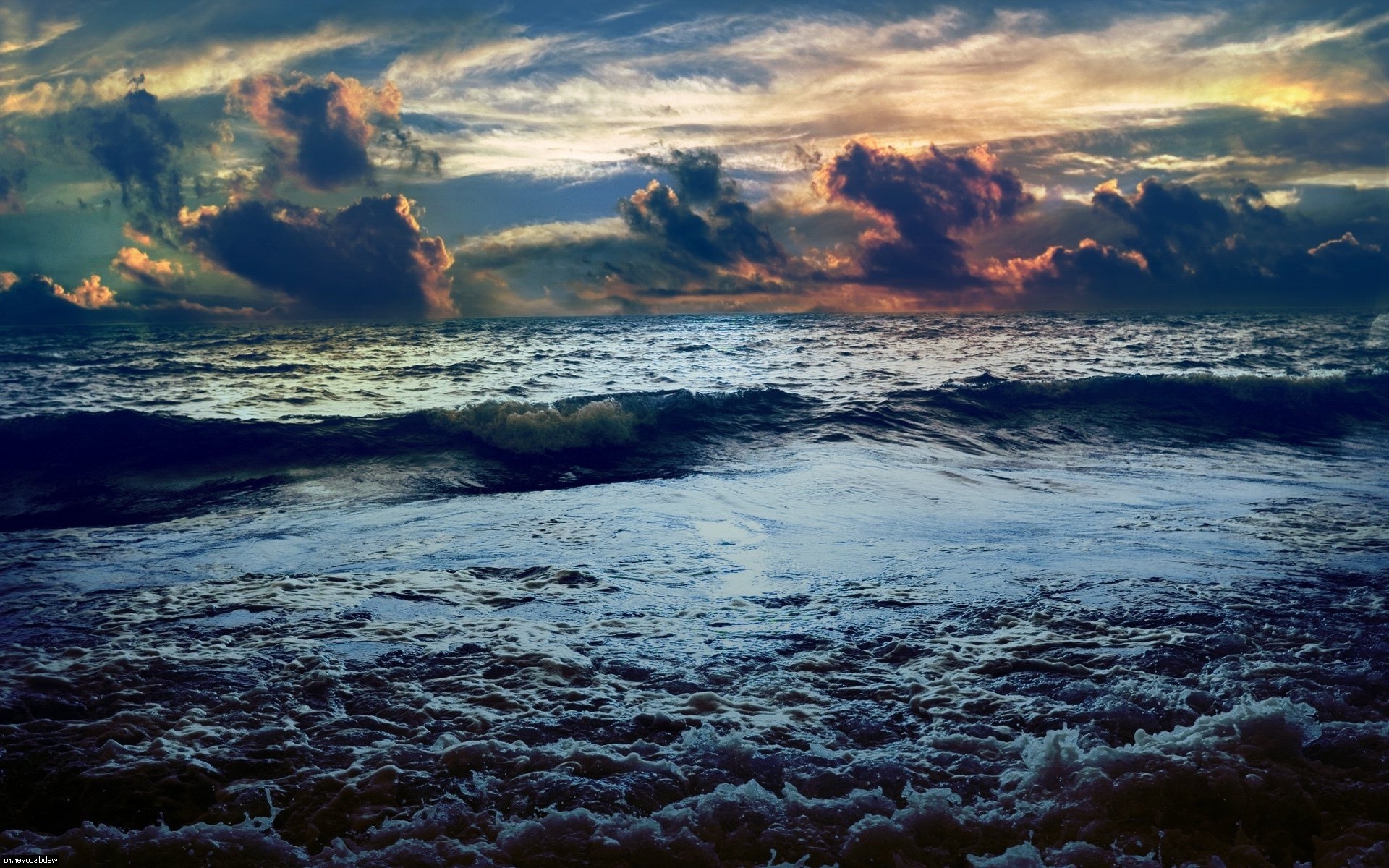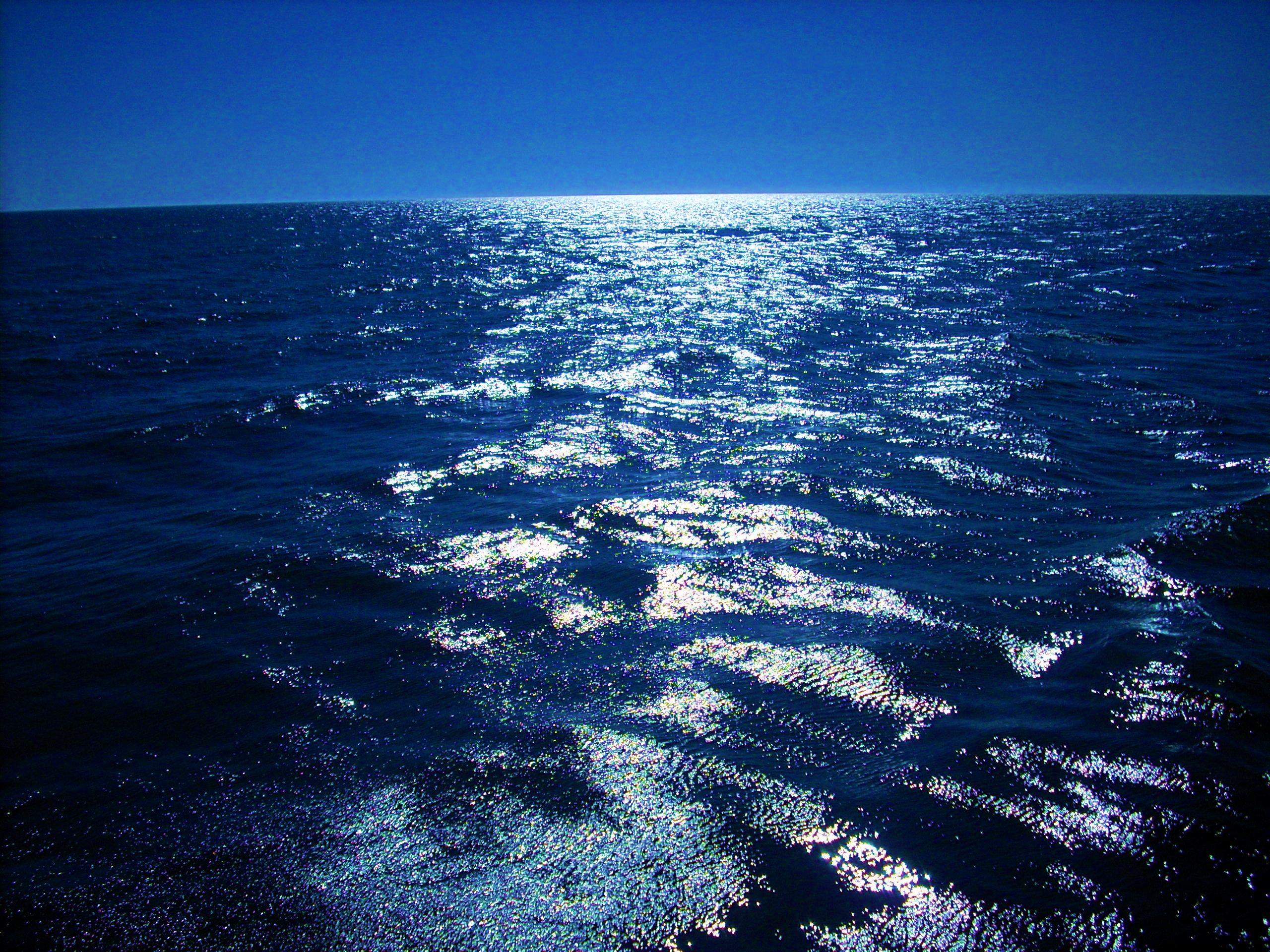Sea Moose Clams - Understanding The Ocean's Vastness
Have you ever stopped to ponder the immense, watery expanses that cover so much of our planet? It's really quite something, the way these vast bodies of water connect, forming a single, enormous system. When we talk about "sea moose clams," we're naturally drawn to think about the places they might call home, and that means we're thinking about the sea itself. This deep connection between these curious creatures and their watery surroundings is, well, pretty fundamental to how we understand them, or any marine life for that matter.
The very idea of "sea moose clams" brings to mind the deep, sometimes mysterious, parts of our world's waters. These incredible aquatic environments are, you know, far more than just big puddles; they are, in fact, a complex, living system. It's almost like a giant, interconnected web of liquid that spans the entire globe, providing a place for countless different forms of life to, so, exist and thrive. To truly appreciate what "sea moose clams" might be, we first need to get a good feel for the watery world they inhabit.
So, what exactly is this immense body of water we call the sea? It's a question that, you know, seems simple enough but has many layers. From the mighty Atlantic to the peaceful Pacific, the warm Indian, the chilly Southern, and the icy Arctic, these are all just parts of one continuous, salty liquid blanket that wraps around our Earth. Thinking about "sea moose clams" helps us to, in a way, focus on the sheer scale of this watery domain, and how its various parts are all linked together, allowing for, perhaps, the movement and life cycles of such interesting creatures.
Table of Contents
- What is the Sea? The True Home of Sea Moose Clams
- How Do We Describe the Sea? Defining the Waters for Sea Moose Clams
- Are All Seas the Same? Exploring Diverse Homes for Sea Moose Clams
- What Makes Sea Water Salty? The Unique Environment of Sea Moose Clams
- The Global Ocean and Its Parts - Where Sea Moose Clams Might Roam
- Seas Surrounded by Land - Cozy Spots for Sea Moose Clams
- How Many Seas Are There? Counting the Homes of Sea Moose Clams
- Understanding the Sea for Sea Moose Clams
What is the Sea? The True Home of Sea Moose Clams
The sea, you know, is really this huge, connected network of all the vast water bodies on our planet. It includes, so, what we call the Atlantic, the Pacific, the Indian, the Southern, and the Arctic water stretches. This means, in a way, that if you think about any creature that lives in these waters, like perhaps some sort of "sea moose clams", they are part of this truly immense, shared watery home. It's not just a collection of separate puddles; it's, basically, one giant, fluid system that moves and breathes as a single entity. The idea that all these different named parts are, actually, just sections of one big whole is pretty cool, and it gives us a better picture of how widely something like "sea moose clams" could, theoretically, spread out or travel, or how their environments are connected.
When people talk about the sea, they often mean the same thing as the ocean—the truly enormous, connected body of salt water that covers most of the planet. It's like, you know, a massive, watery blanket that wraps around the Earth. This vastness is, well, what allows for so much life to exist, from the tiniest organisms to, perhaps, something as intriguing as "sea moose clams." The sheer volume of water, the way it interacts with the land and the air, creates conditions that are, in some respects, just right for countless species to find their niche. So, when we picture the sea, we should really be thinking of this single, vast, life-supporting system.
The meaning of the sea is, at its core, a great body of salt water that covers, you know, much of the Earth. It's the waters of the Earth as distinguished from the land and the air. This distinction is, in a way, quite important because it helps us to think about the unique properties of water itself, especially when it's salty and covers such a significant portion of our world. For any creature, like "sea moose clams," their very existence is tied to this watery environment, and understanding the basic nature of this liquid home is, pretty much, the first step to understanding them. It's what makes their world different from ours on land, or from the skies above.
- Nikki Cross Sexy
- New Fdny Commissioner
- Fatman Scoop Energy Drink
- Helicopters In Santa Clarita Right Now
- Samoan Cat
How Do We Describe the Sea? Defining the Waters for Sea Moose Clams
In general, when people say "the sea," they often mean the same thing as "the ocean"—the enormous, connected body of salt water that covers most of the planet. This shared understanding is, you know, pretty common. It highlights how vast and continuous this watery expanse truly is. For creatures like "sea moose clams," this means their potential habitat is, essentially, global. There aren't, like, hard boundaries in the deep water; currents and vast stretches of ocean connect everything. This interconnectedness is, in a way, a defining feature of their world, allowing for wide distribution or, perhaps, very specific localized conditions that still feel the influence of the larger system.
A sea is, generally, defined as a portion of the ocean that is partly surrounded by land. This is, you know, a key way to tell a sea apart from the wider, open ocean. These areas often have different characteristics due to their proximity to land, like different temperatures, currents, or, perhaps, even a slightly varied salt content. For something like "sea moose clams," these partly enclosed areas might offer, in some respects, more sheltered conditions or a different kind of food source compared to the open ocean. It's a way of, basically, breaking down the huge global ocean into more manageable, distinct regions, each with its own unique feel.
A sea is a large body of salt water. It may be an ocean, or it may be a large saltwater lake which, like the Caspian Sea, lacks a natural outlet. This is, you know, a pretty interesting point because it shows that not all "seas" are directly connected to the larger global ocean in the way we usually think. The Caspian Sea, for example, is a huge body of salty water that is completely landlocked, yet it's called a sea because of its size and saltiness. This means that if "sea moose clams" were to exist, they could, theoretically, be found in environments that are, perhaps, not directly part of the main ocean system, which is, honestly, quite a thought.
Are All Seas the Same? Exploring Diverse Homes for Sea Moose Clams
While there is one global ocean, experts generally divide it up into five major interconnected basins. These are, you know, the Pacific, the Atlantic, the Indian, the Southern, and the Arctic. Each of these major sections has its own distinct characteristics, like average depth, temperature, and even the types of life found there. So, if we're thinking about where "sea moose clams" might live, it's not just "the sea" in general, but perhaps, more specifically, one of these grand basins that offers the right kind of conditions. It's like saying you live in a country; you still have a specific city or region, and the ocean is, basically, the same in that regard.
A sea is generally smaller than an ocean. In fact, a sea is usually part of a larger ocean that is partially enclosed by land. Examples are, you know, the Red Sea and the Mediterranean Sea. These smaller, more defined bodies of water often have unique ecosystems and, perhaps, different levels of saltiness or temperature fluctuations compared to the vast open ocean. For "sea moose clams," living in a sea rather than the open ocean might mean a more stable environment, or, conversely, one with more pronounced seasonal changes. It's like, you know, the difference between living in a big city and a smaller town; both are part of a larger area, but they have their own distinct qualities.
What Makes Sea Water Salty? The Unique Environment of Sea Moose Clams
The salty water that covers a large part of the surface of the Earth, or a large area of salty water, is what we, pretty much, mean by the sea. This saltiness is, you know, a defining characteristic that sets it apart from freshwater bodies. The salt comes from, basically, rocks on land, which get weathered down and carried into the ocean by rivers over millions of years. This constant presence of salt creates a very specific kind of environment that only certain life forms can, you know, truly thrive in. For "sea moose clams," this salinity is, in a way, a fundamental part of their biological makeup and how they interact with their surroundings. It's what makes their world, actually, quite distinct.
A salinity map, perhaps taken from something like the Aquarius spacecraft, can show us the different levels of saltiness across the world's oceans. This variation is, you know, quite interesting, as some areas are saltier than others due to evaporation, rainfall, or freshwater input from rivers. These differences in salt content can, in some respects, affect the types of creatures that can live in a particular area. So, for "sea moose clams," understanding the salinity of their potential habitat is, pretty much, key to figuring out where they might be found and how they survive. It's a subtle but, honestly, very important factor in the overall makeup of their watery home.
The Global Ocean and Its Parts - Where Sea Moose Clams Might Roam
The interconnected system of all the Earth's oceanic waters, including the Atlantic, Pacific, Indian, Southern, and Arctic oceans, is, you know, what truly defines the global ocean. This vast, continuous body of water means that, in a way, everything is connected. A current starting in one ocean can, eventually, reach another, carrying nutrients, warmth, or even, perhaps, the larvae of creatures like "sea moose clams" across immense distances. This global connection is, basically, why studying one part of the ocean often tells us something about other parts. It's a single, fluid system, and understanding that is, pretty much, essential to grasping the bigger picture of marine life.
How to use "sea" in a sentence, or what its dictionary definitions page includes, gives us all the possible meanings, example usage, and translations of the word "sea." This shows us that the word itself is, you know, quite versatile, referring to everything from the entire global ocean to smaller, more defined bodies of water. For something like "sea moose clams," the context of "sea" matters. Are we talking about them in the vast, open ocean, or in a more confined, specific sea? The way we use the word helps us, actually, to pinpoint the kind of environment we're discussing, which is, in a way, quite helpful when trying to imagine these creatures' lives.
Seas Surrounded by Land - Cozy Spots for Sea Moose Clams
In general, a sea is defined as a portion of the ocean that is partly surrounded by land. Given that definition, there are, you know, about 50 seas around the world. These areas, like the Mediterranean or the Red Sea, are often warmer, or, perhaps, have different nutrient levels because of the landmasses around them. For "sea moose clams," such locations might offer a more stable or, in some respects, a more varied habitat compared to the open ocean. It's like, you know, how different neighborhoods in a city have their own feel; these seas are distinct "neighborhoods" within the larger oceanic "city," providing unique conditions for marine life.
A large body of salty water, often part of an ocean or surrounded by land, is what we typically mean by a sea. Major seas are, you know, quite well-known, like the Caribbean Sea or the Bering Sea. These areas, due to their partial enclosure, can have their own distinct currents, temperatures, and, perhaps, even different types of sediment on the seafloor. This means that if "sea moose clams" prefer certain conditions, they might be found more readily in one of these specific seas rather than just anywhere in the vast ocean. It's a way of, basically, narrowing down the possibilities for where these interesting creatures might call home, focusing on the particular characteristics of these somewhat enclosed water bodies.
How Many Seas Are There? Counting the Homes of Sea Moose Clams
The Ukrainian navy also said on X that naval forces destroyed 20 'Shaheds' and 1 Russian Black Sea Fleet boat last night, using the forces and means of the Ukrainian navy. This example, you know, shows how a specific sea, like the Black Sea, is a distinct geographical entity, often with its own strategic importance and unique characteristics. The Black Sea is, in a way, a good example of a sea that is almost completely surrounded by land, with only a narrow connection to the larger Mediterranean. For "sea moose clams," if they were to exist there, this kind of enclosed environment would mean a very particular set of conditions, like lower salinity compared to the open ocean, which is, pretty much, a result of the freshwater input from rivers. It really highlights how diverse these "seas" can be, even though they are all part of the larger global water system.
Understanding the Sea for Sea Moose Clams
Understanding the sea, in all its interconnectedness and varied forms, is, you know, pretty essential for anyone thinking about marine life, especially something as intriguing as "sea moose clams." From the vast, global ocean that wraps around our planet to the smaller, more defined seas that are partly surrounded by land, each watery expanse offers a unique set of conditions. The saltiness, the depth, the temperature, and the currents all play a role in shaping the environments where creatures live. So, when we consider "sea moose clams," we're not just thinking about a creature, but about the incredible, diverse, and truly vast aquatic home that sustains them, and, basically, all life in the ocean.
- Lindsey Hoskins Associates Couple Family Therapy
- Saffron Town Center
- Rattlin Bog Wedding
- Orbar Bbq
- Katt Anomia

Sea Landscape Wallpapers - Top Free Sea Landscape Backgrounds

sea Wallpapers HD / Desktop and Mobile Backgrounds

THE LURE OF THE SEA – Sunbyanyname